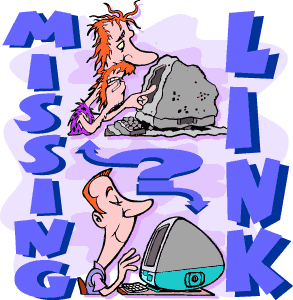 |
|
||||||||||||
|
Columns by Linda Formichelli:
List all of Linda's columns
Visit our other Getting Work columnist
|
Behold your Web site: It's perfect. Your content blinds with its brilliance, and your design makes grown men cry. No mere mortal has ever seen a site as stunning as yours. And if you don't have a linking strategy, probably no one ever will. Links help drive traffic to your site and can even boost your ratings in the search engines. Much like high school cliques, search engines like Fast and AltaVista pay attention to your popularity when deciding how high to rank you. Also, links from well-established sites heighten your credibility -- so you can either be just "Joe Shmoe" or "Joe Shmoe, endorsed by the American Copywriters Association." Here's a fascinating, four-step plan that may make you the king, or queen, of the links. Step 1: Decide Whose Boots to Lick You need to be choosy about the people you link with. Having your URL listed among sites like "Burn Fat While You Sleep!" and "***FREE XXX PICS***" may do you more harm than good. Says link guru Eric Ward, who founded the Web's first service for announcing Web sites to online editors, writers, and site reviewers, "I don't seek links on sites that offer links to any and all comers. If any site can have a link, then the link list will become so large as to become useless quickly." Not only that, but the search engines that factor in popularity don't give much weight to irrelevant links. So whose butt should you be kissing for links? There's an easy way to find out: plug your fiercest competitor's URL into LinkPopularity.com to see what sites are linking to him. Check out who's linking to your sworn enemy -- and then go after those people. Chances are, they'll link to you too. Step 2: Down on Your Knees -- Now Beg! In some cases, getting a link is as easy as filling out an online form. But if you're looking for a link from anything other than a business directory, you'll need to get down on your knees and beg. The email you'll write to ask for a link is much like a sales letter -- you must state your case and concentrate all your powers of persuasion into prose so tight that not even light can escape it. Practice writing a persuasive site description in 50 words or less to convince Webmasters that the half a minute it will take to read your message and visit your site will be time well spent. According to Ward, the most common mistakes link wannabes make are:
Step 3: Don't Get Spam in the Engines When you find out that a site has linked to you, you may be tempted to submit the URL into the search engines that factor in link popularity to speed your ratings boost. Don't do it. "Submitting someone else's URL is not appropriate unless they have given you permission to do so," says Ward. Search engines have rules against spamming them with multiple submissions. So if everyone decided to submit a certain site to get their links indexed more quickly, they could actually cause that site to be penalized or banned from the search engine. "Think of it this way," says Ward. "Is it appropriate for you to order a pizza for someone else who has no idea that you are ordering it? You might think that you're doing them a favor, but if 100 people come to my house with a pizza I would likely be very unhappy. When you submit a URL, you have basically placed an order for the search engine to go to that URL and index it." Step 4: Stalk Your Visitors If you're serious about racking up links to your site, you'll need to keep track of your link requests. Create a form or database file that lets you record the name and URL of the site; the name and email address of the Webmaster; the date you contact them; the date they respond; the results of your request; the date your link goes up; and periodic checks that the link is still there. One way to keep track of how many visitors each link brings you is to check your Web logs. If your ISP doesn't offer Web logs (or if they make you pay for the service, the swine), you can get one gratis from places like TheCounter.com or eXTReMe tracking. These sites let you see how many visitors have surfed to your site, what sites they came from, what operating systems they're using, and more. It also breaks down traffic by hours of the day, days of the week, and so on. The only drawback is that you must place the eXTReMe tracking button on the main page of your site, where any old body can click on it and get the scoop on your traffic patterns. So now that you know that links are the missing link in your Web-site promotion plan, get out there and beg, wheedle, and cajole your way into the hearts and sites of Webmasters everywhere. |
|
|
We'd love to hear your feedback about this column, or put you in touch with Linda Formichelli if you like. You may also like to see her biography. |
The 1099 name and logo are trademarks of 1099 Magazine.

